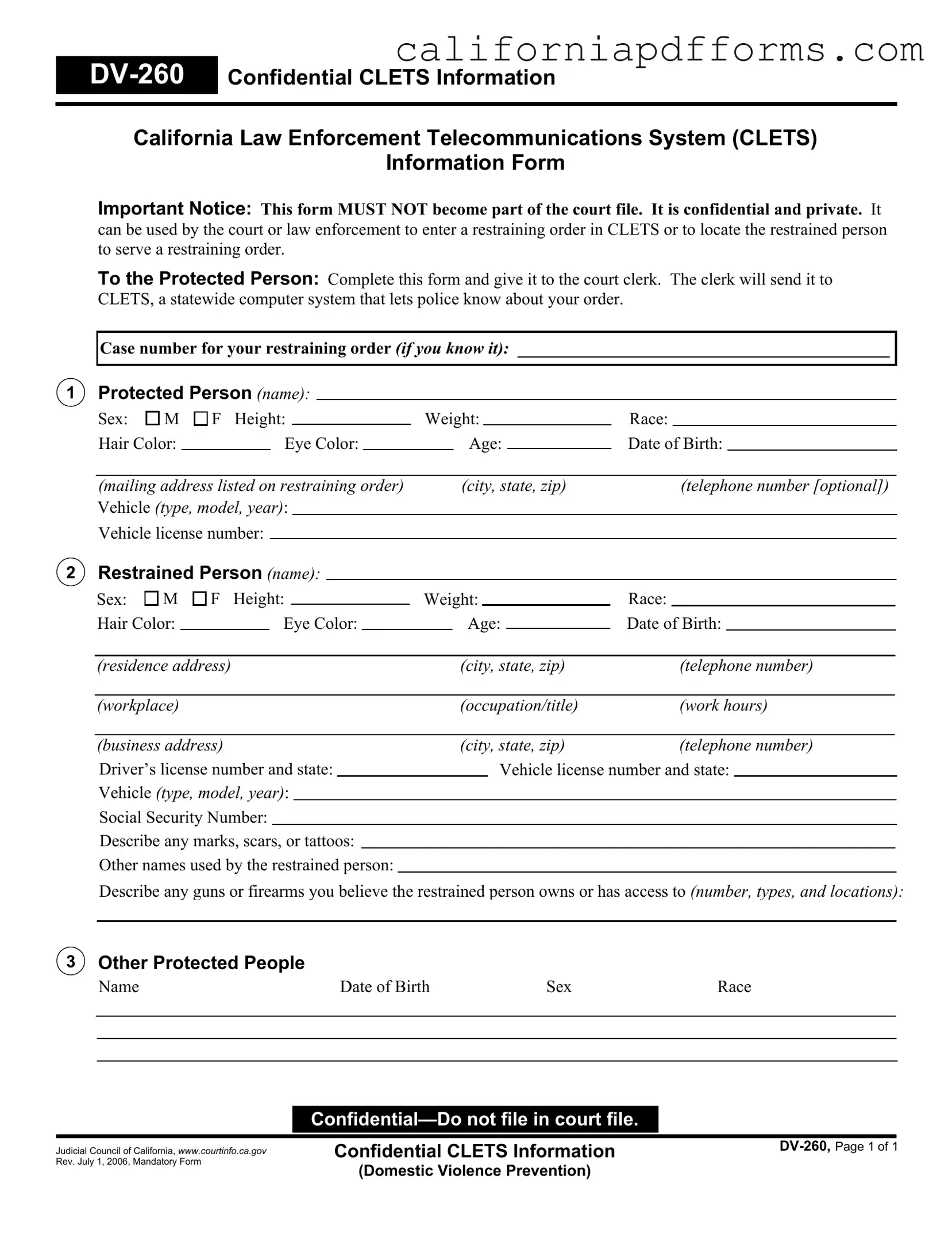The California DV-260 form, also known as the Confidential CLETS Information Form, is a document used in domestic violence cases. It is designed to provide essential information to law enforcement about the individuals involved in a restraining order. This form is confidential and must not be included in the public court file.
The protected person, typically the individual seeking the restraining order, must complete the DV-260 form. This form helps ensure that law enforcement can effectively enforce the restraining order and locate the restrained person if necessary.
The form requires various details, including:
-
Protected person's name, sex, height, weight, race, hair color, eye color, age, and date of birth.
-
Contact information, including mailing address and telephone number.
-
Details about the restrained person, including their name, physical description, and any known firearms.
-
Information about any other protected individuals.
No, the DV-260 form is confidential. It is not part of the public court file, ensuring that sensitive information remains private. Only law enforcement and the court can access this information to enforce the restraining order.
The protected person must complete the form and submit it to the court clerk. The clerk will then send it to the California Law Enforcement Telecommunications System (CLETS), which allows police to access the information when needed.
Failure to submit the DV-260 form may hinder law enforcement's ability to enforce the restraining order effectively. It is crucial for the protection of the individual seeking help that this form is completed and submitted as required.
What should I do if I believe the restrained person has firearms?
If you suspect that the restrained person owns or has access to firearms, it is crucial to document this information on the DV-260 form. Provide as much detail as possible, including the types of firearms and their locations. This information can be vital for law enforcement.
If you do not have all the information requested on the DV-260 form, fill out as much as you can. It is better to provide partial information than to leave the form blank. Law enforcement can still use the information you provide to assist in your case.
For additional information about the DV-260 form and the process of obtaining a restraining order, you can visit the Judicial Council of California's website or consult with a legal professional. They can guide you through the process and answer any specific questions you may have.
